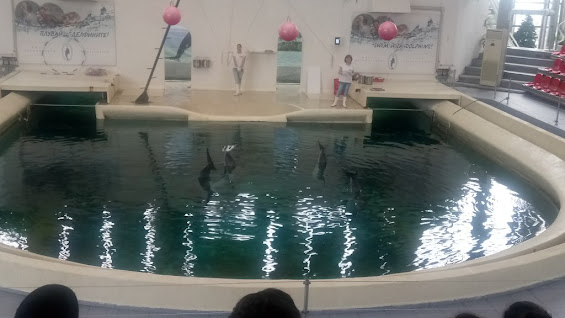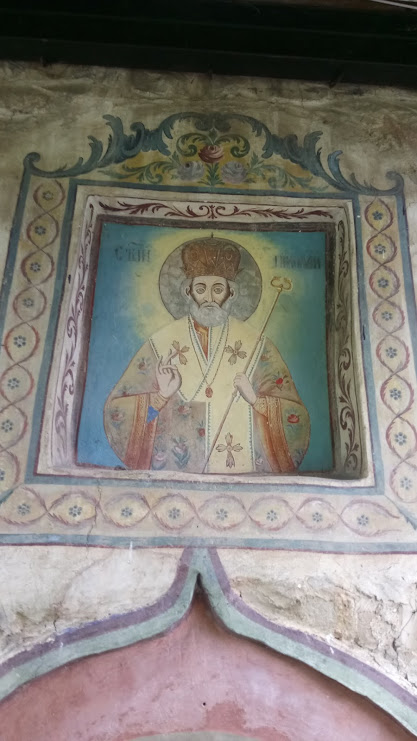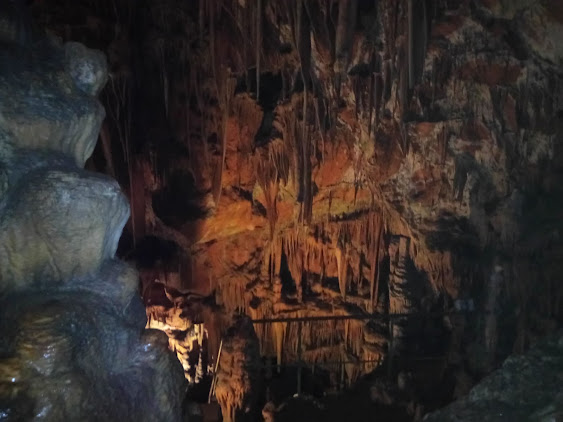Wednesday, December 29, 2021
Monday, December 27, 2021
Friday, December 24, 2021
Monastery of Kapinovo, Veliko Tyrnovo, Bulgaria
The "St. Nikola" Monastery of Kapinovo lies at the foot of the Elena Balkan, near the Vesselina river. This is one of the biggest monasteries in Bulgaria and is an interesting monument of architecture from the period of Bulgarian National Revival.
In the east wall of the monastery, there is an inscription indicating that the monastery was built in 1272. During the Turkish yoke, the monastery was destroyed and later restored several times. In 1835 masters from the town of Dryanovo reconstructed the monastery church, and Papa Vitan - a master from Tryavna, painted the big icons of the iconostasis. The whole west wall of the church represents scenes of the Doomsday and is one of the richest compositions in Bulgaria. It was painted by Joan Pavlovich, an artist from Razgrad.
In 1856, the old walls of the monastery were destroyed and the two brothers Horozov from Elena constructed massive two-storied residential buildings. The exterior is 8m high, 1.5m thick and made of stone, and this makes the monastery imposing.
When restoring the monastery in 1856 paintings of the two brothers St. St. Cyril and Methodius were put up above the entrance door. An unknown artist painted the interior walls in the chapel, built in 1864. Among his paintings are portraits of Famous Bulgarian spiritual and literature activist - Ivan Rilski, Theodosii Tarnovski, Patriah Evtimii, and Ilarion Maglenski. The strongest impression makes the portrait of the two brothers Horozovi.
As far back as the beginning of the Bulgarian national revival, the monastery served as a cultural center. In 1794, father superior of the monastery became Pope Stoiko Vladislavov, later known as Episcopate Sofronii Vrachanski. He was a custodian to the transcript of History of Slavic Bulgarians, from Paisii Hilendaski. In the close proximity of the monastery.
Thursday, December 9, 2021
SAEVA DUPKA CAVE: THE UNDERGROUND PEARL OF BULGARIA
One of the most spectacular caves in all of Bulgaria, the Saeva Dupka cave is a stunning natural cave in Northern Bulgaria, roughly halfway between Sofia and Veliko Tarnovo.
The cave got the name Saeva Dupka from two brothers who hid there during the Ottoman occupation. A short drive from the nearby village of Brestnitsa, Saeva Dupka is well-loved by Bulgarians but not very well-known to foreign tourists yet.
The cave is absolutely gorgeous, filled with massive stalagmites, stalactites, and other cave formations. The size is quite impressive as well, much more spacious than you’d ever imagine looking at the outside. The height of the cave varies from 8 meters to 32.5 meters over the various halls, with a total area of about 3,500 square meters.
Saeva Dupka cave is somewhere between 1 and 3.5 million years old. Declared a national landmark in 1962, the cave has since been developed to make access easier for tourists, adding stairs, pathways, and ladders to access the upper chambers of the cave.
Saeva Dupka is composed of five main galleries, each with a different name. If you speak Bulgarian, the guide will explain the names to you and point out different formations and what they resemble.
The Seven Rila Lakes, Rila, Bulgaria
The Seven Rila Lakes are without a doubt one of the most notable natural attractions on the Balkan Peninsula, a dream destination not to be ...

-
The historic complex consists of several houses and a beautiful pond with water lilies. The place is very...
-
The Seven Rila Lakes are without a doubt one of the most notable natural attractions on the Balkan Peninsula, a dream destination not to be ...
-
The Shipka monument is one of the most brilliant and well-known symbols in the country. Dedicated to the ...


























































